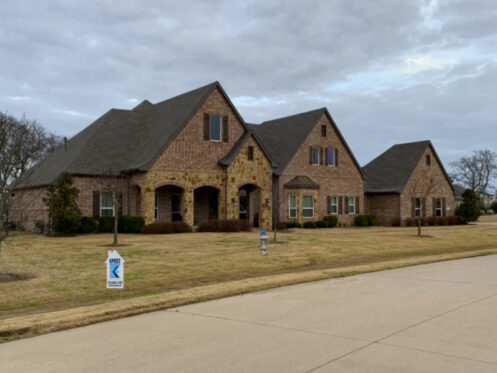When a storm hits the Dallas area, it can have quite an impact on your property’s roof. There may be damage, although some signs of it aren’t as apparent as others. So, how do you know your roof has suffered damage? Here are some clues to look for when you inspect your property after a storm.
1. Visible Leaks
Excessive rain or other types of severe weather, such as hail, can cause your roof to leak. While standing water on the roof isn’t uncommon after a big storm, water that doesn’t drain or evaporate in 48 to 72 hours is a warning sign. This can cause greater damage and lead to more significant repairs.
2. Wet Ceiling Tile
Wet or stained ceiling tiles may be telling you the roof has sustained damage from a storm. Leaks from punctures or pooled water can result from severe rain, high winds, hail, and flying debris.
3. Downed Power Lines & Trees
Extremely high winds can cause damage to not only your roof but also the property grounds. Downed power lines and trees are obvious signs of a significant storm’s impact and are often an indicator that your roof has also sustained damage.
4. Debris Everywhere
High winds and heavy rain can spread debris all over your landscaping – and onto your roof. Leaves, branches, twigs, dirt, and other debris can clog your roof drains and lead to water leaks. They could also puncture your roof in some cases. Be sure to check your gutters and downspouts because they can become clogged with debris because of a storm.
5. Dents in Air Conditioning Units
Hail can cause damage to your roof and everything around it. If your air conditioning units have dents in them after the storm, there’s a good chance the roof has sustained damage, too. The good news is a damaged air conditioning unit may qualify for an insurance replacement.
6. Trash and Broken Glass
When a storm has passed, that doesn’t mean the danger has. Trash, specifically broken glass, is another safety hazard to watch out for. Not only are they a hazard to your roof, but to you and your maintenance team. Broken glass can easily puncture your roof system or cause bodily injury if you happen to step on a piece. Make sure to handle trash and debris with caution as you inspect your roof.
7. Missing Tiles and Shingles
Strong winds, hail, tornadoes all can damage your roof. Even without rain or hail, strong winds can create stress points on a roof that weaken over time. Flying debris, tree branches, and trash all can cause damage and tear away shingles and tiles.
Missing tiles and shingles are examples of a roof with sustained storm damage, even if it has accumulated over time. After the storm, look for missing, curled, cracked or torn shingles (mainly asphalt and composite shingles).
8. Membrane Punctures
Weather can do a number on the membranes of low-slope roofs, whether it’s punctures caused by debris and branches, by a hail storm, or by a windstorm that pulls up a roof’s layers.
Fierce storms can also dislodge mechanical equipment and other objects while causing them to move in ways that directly harm the roof, such as causing punctures.
If you notice signs of storm damage on your commercial building’s roof, call the professionals at KPost Company. We have the experience and know-how to repair your roof and prevent further damage.

